From the January 2021 issue of Apollo. Preview and subscribe here.
The flat farmland that surrounds the medieval hamlet of Garavicchio in Tuscany is punctuated by one densely verdant hill. Approached by car, its southern slope comes slowly into view and, with it, the startling emergence of a monstrous blue face. Gaping and gormless, its red eye roves downwards as water is spewed from inflated purple lips. The creature has company, in the form of glittering sunlit silhouettes that hint at still more outlandish entities.
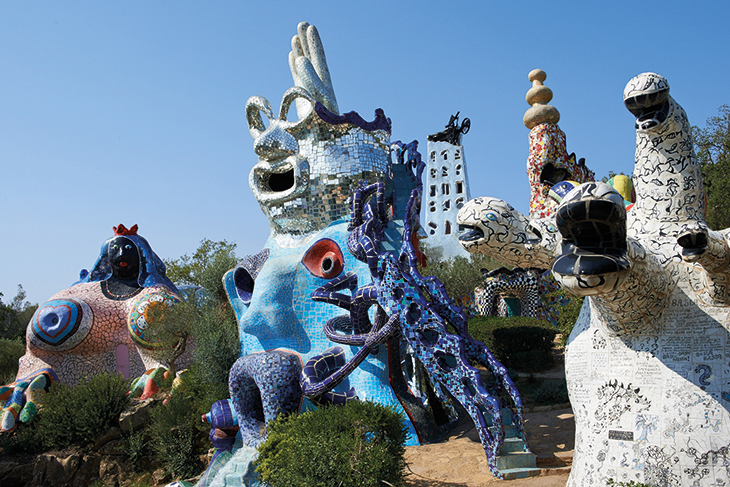
From left to right: The Empress, The High Priestess, The Magician, The Falling Tower, The Emperor and The Tree of Life at the Tarot Garden in Garavicchio. Photo: © Peter Granser; © Fondazione il Giardino dei Tarocchi. All rights reserved
The Tarot Garden, the magnum opus of the French-American artist Niki de Saint Phalle, opened to the public in 1998. The idea for a sculpture garden, however, first came to the artist in 1955 when, aged 25, she visited Antonio Gaudí’s Park Güell in Barcelona. At the time, Saint Phalle was a discontented housewife and self-taught painter, a practice she had taken up two years earlier while staying in a psychiatric clinic in Nice. She had suffered a nervous breakdown and was found stuffing knives beneath her mattress. Her flat and amateurish art was not yet taken seriously, but the obsessive pastime proved key to her recovery.
In 1960, Saint Phalle left her husband and children and became a full-time artist. Her dream of a garden would have to wait until her friends, the Caracciolo family, offered her 14 acres in the late 1970s. Twenty years of hard work followed, with Saint Phalle leading a team of locals and outside specialists through the process, from welding steel armatures to cladding cemented bodies with glass, mirror and ceramics. A declaration of her independence, the garden was funded by Saint Phalle at considerable expense. Among her get-rich-quick schemes was the production of an eponymous perfume in a bottle with two entwined snakes on its cap; proceeds from its sale covered one third of construction.
When I visit the garden on a warm October day, my first encounter is with the same blue face, which, seen close-up, looms somehow less alarmingly and turns out to be The High Priestess. Above her, The Magician dazzles in a mosaic of mirrors. To enter the garden I pass beneath an arch, upon which a fiery red and orange bird perches as a representation of The Sun. As I wander upwards, along narrow, winding paths, many more colourful characters reveal themselves. Each is one of 22 from the Tarot’s Major Arcana; all are psychedelic and highly stylised.
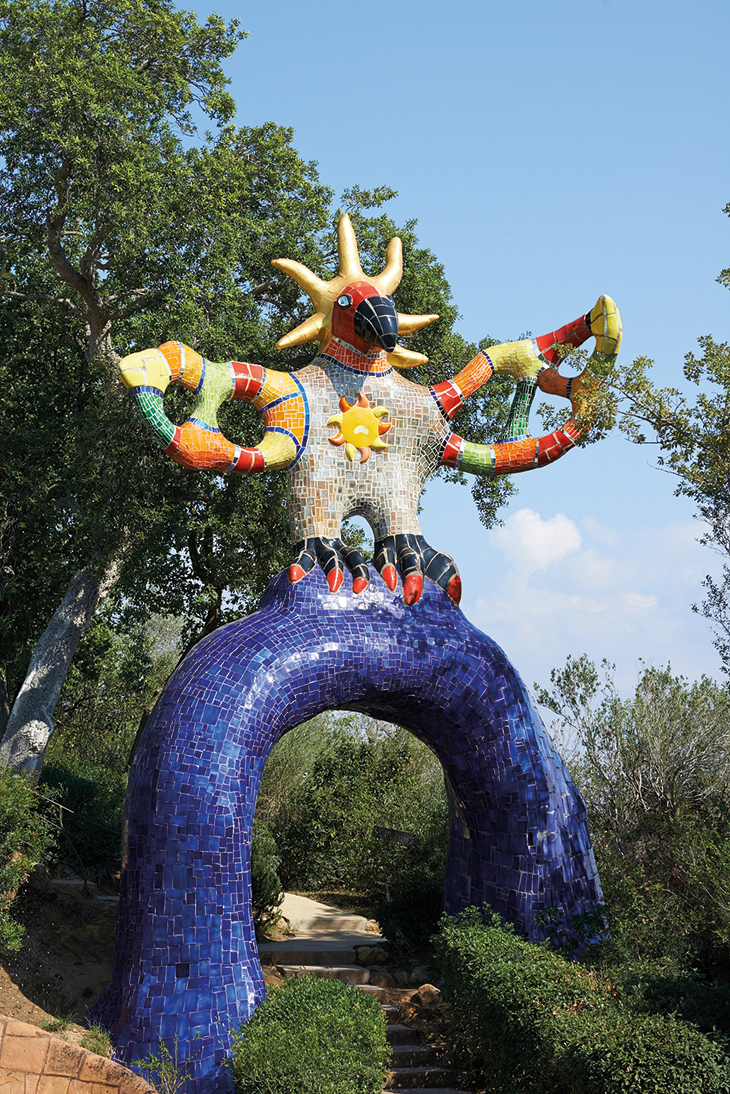
The Sun in the Tarot Garden in Garavicchio. Photo: Peter Granser; © Fondazione il Giardino dei Tarocchi. All rights reserved
The effect may sound garish, but it fuses happily with the surroundings, doing away with our simplest classifications of nature and artifice, such as those for colour or light effects. The impossibly bright blue and silver glass on the chapel, for example, draws our attention to the way in which sunlight sparkles when reflected on the leaves of nearby shrubs and olive trees.
The Tarot, a medieval card game now appreciated mainly for its esoteric meanings, offers a language ready to be imbued with personal interpretations. In card readings, their significance is shaped by the cards’ sequence and association, and in the case of the garden there are gestures, both clear-cut and cryptic, to Saint Phalle’s life and work. Among the most familiar figures are the many Nanas, joyful, rollicking women on a monumental scale. ‘I think that I made them so large so that men would look very small next to them,’ Saint Phalle once remarked. Unashamedly sexual but unconcerned with the male gaze, the Nanas grew in size until a temporary construction, HON – en katedral (1966), at the Moderna Museet in Stockholm could be entered by crowds.
For several years, Saint Phalle set up home inside the mighty Empress, represented by a sphinx. Its mirrored interior first fragments, then obliterates my reflection as it whirls into infinite dimensions. Its cavernous contours are offset by refracted daylight, so luminous that it almost turns the structure inside out. For all the glitz of her surroundings, Saint Phalle lived simply, making do with a minimalist kitchen and tiny furniture.
The garden is a statement made through scale, but visitors are encouraged to get caught up in the detail. ‘The whole garden reminds me of a medieval church, where every little corner is filled with something’, Saint Phalle once observed while striding through The Emperor, the courtyard of which has 22 pillars each of a different design. Though most of the sculptures reveal a woman-centric reading of the cards, the castle offers an ambiguous take on male power in society, as a source of knowledge and protection as well as control and brutality. This balance of forces is expressed by a black-and-white checked pathway, and violent, bloody scenes on the walls.
Evidence of a decades-long collaboration, and at one time a love affair, with the Swiss kinetic artist Jean Tinguely is scattered throughout the garden. Of Tinguely’s contributions, Injustice, trapped in the belly of Justice, again highlights the coexistence of good and bad. Its complex interconnection of rusty, broken metal with the skulls and bones of animals is slowly and seemingly precariously moved in rotation by a system of ropes and pulleys. Its interminable groaning and creaking is a haunting antithesis to the proud optimism that can be found in the rest of the garden.
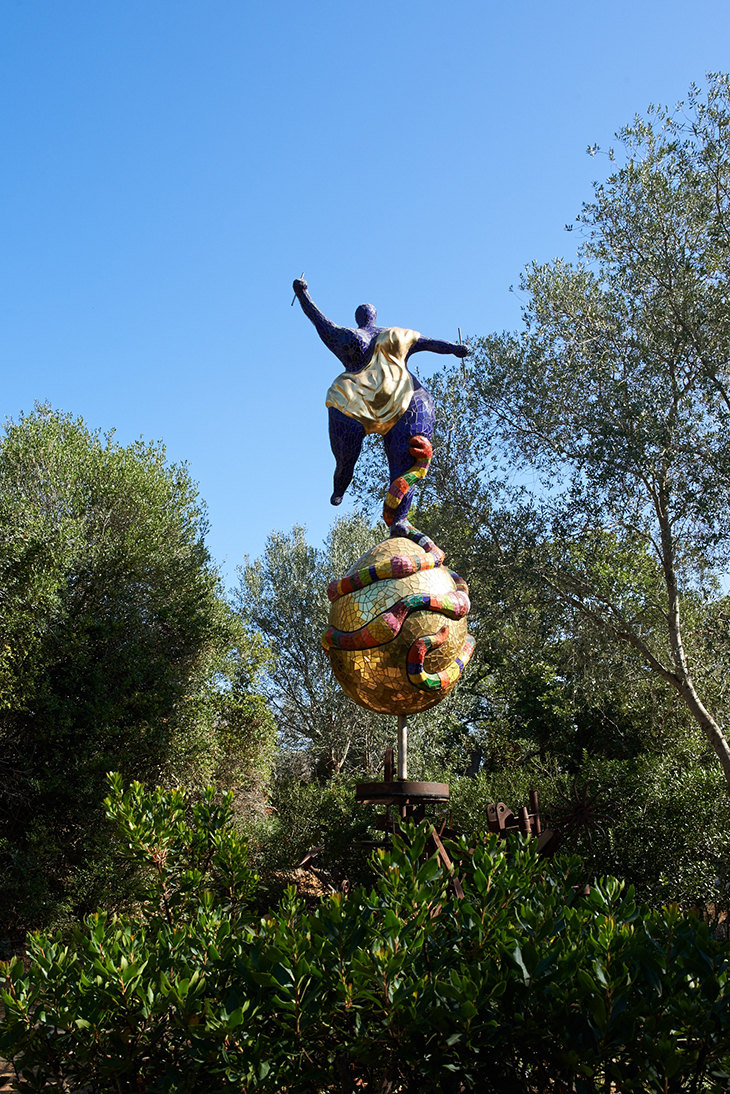
The World in the Tarot Garden at Garavicchio. Photo: Peter Granser; © Fondazione il Giardino dei Tarocchi. All rights reserved
Soon after Saint Phalle’s life-changing encounter with Gaudí and the Parc Güell, she began making assemblages. These early works were violently angry, full of guns and cleavers. Lurking serpents and other reptiles refer to sexual abuse in her childhood. By contrast, in the Tarot Garden, La Force represents a dragon kept at bay by a woman in white who embodies inner strength rather than coercion.
Thinking of Saint Phalle’s life as well as her work, I am reminded of other women artists of her generation, such as Kusama or Bourgeois, whose art often feels like an outward projection of the psyche. Yet the garden also feels like a transcendental mission. Saint Phalle certainly believed so, insisting ‘I was the instrument to make this garden’ and ‘it wasn’t even my choice, it was destiny.’ Far from being an act of retaliation against a world in which she felt out of control and an outsider, Saint Phalle’s garden is a world of its own, with new rules, new hierarchies, and playful monuments to matriarchs.
From the January 2021 issue of Apollo. Preview and subscribe here.
Unlimited access from just $16 every 3 months
Subscribe to get unlimited and exclusive access to the top art stories, interviews and exhibition reviews.

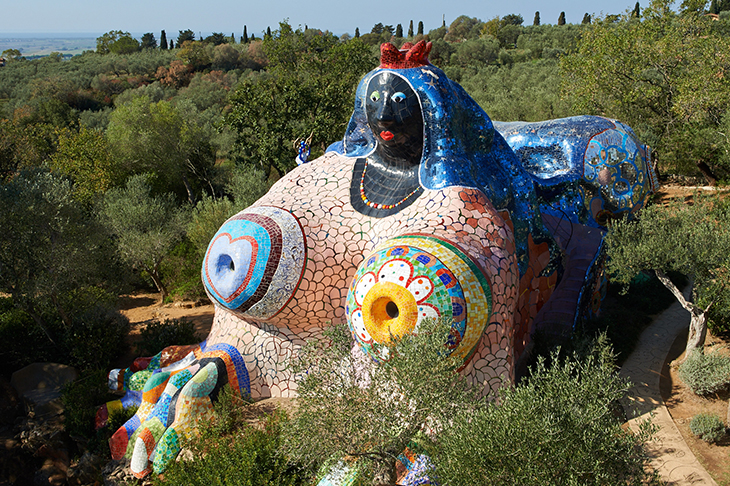
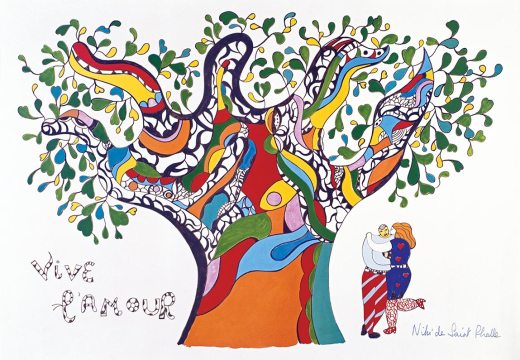
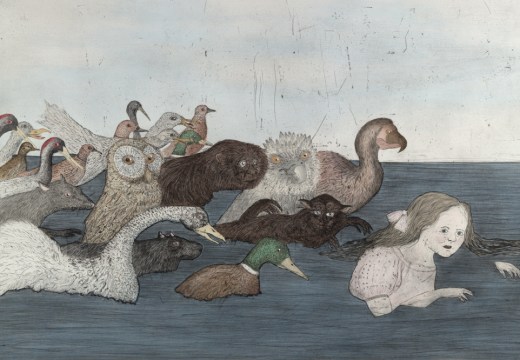
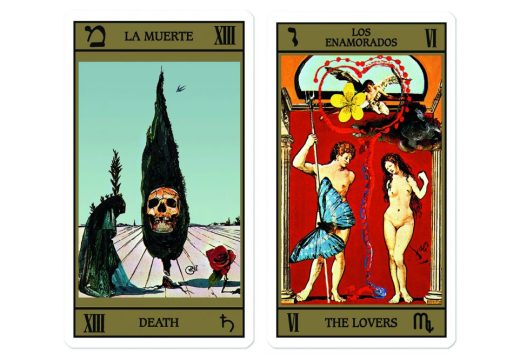









![Masterpiece [Re]discovery 2022. Photo: Ben Fisher Photography, courtesy of Masterpiece London](http://www.apollo-magazine.com/wp-content/uploads/2022/07/MPL2022_4263.jpg)
It’s time for the government of London to return to its rightful home